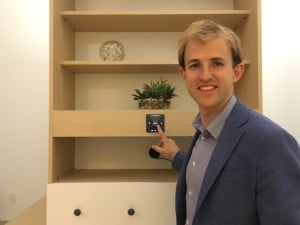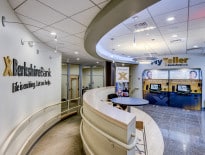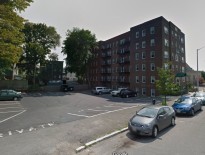Hasier Larrea
Title: CEO, Ori Inc.
Age: 30
Industry experience: 7 years
Boston-based Ori Inc. has big ambitions for its robotic furniture systems, which combine entertainment, home office, storage and sleep spaces in a single collapsible component. Founded by MIT grad Hasier Larrea, the company created its original prototype at the MIT Media Lab and launched a pilot program two years ago with $1 million in angel investor funding. In September, Ori received $6 million in series A funding led by Khosla Ventures to support its current growth phase, and just began marketing its mobile app-controlled product to multifamily developers in Boston, New York and Washington, D.C.
Q: How did you identify the need for this type of product?
A: With mass urbanization and millions of people moving to cities, space for apartments and offices and hotels is way too valuable to be static and unresponsive. We looked at tech to empower spaces to be much smaller. The product we launched as a company was focused on this trend toward microapartments in Boston, New York and San Francisco. Studio renters, although they appreciate the smaller rents, are having a lot of functionality issues and a lot of compromises.
People were complaining about several issues. The division of space, especially for couples. If you live in a studio, it’s hard to have two activities like sleeping and working. The studio is always a bedroom. It’s hard to socialize. And a lack of storage. People have a lot of physical things, and it’s hard to have a walk-in closet in a 300-foot apartment. Our product makes your bedroom appear and disappear, and creates a walk-in closet on demand. It’s like a Swiss Army knife.
Q: What are the basic elements of the Ori system?
A: You have the entertainment (system) area, a full office, a closet and a queen or a full bed, and a secondary area. So you could have two people working, one on each side of the system.
Q: Where does production take place?
A: The steel and electronics are manufactured in Vermont and the furniture and plywood comes from Rhode Island. The track that goes in the floor is done in California.
Q: Who are some of your local developer clients?
A: We did a pilot with Boston Properties last year and now we are working with them again. Samuels & Assoc. has been one of our very early partners. They had a building that opened last year (Continuum in Allston). Right now (Ori) systems are in the studio layouts. The very first we did in Boston was a pilot at Watermark Seaport, an apartment that we as a company rented as an Airbnb and had people give us feedback. That’s how we perfected the product.
Q: What was some of the most useful feedback?
A: The first prototypes were a bit rough. Our system looked like a robot, which is kind of nice if you’re an MIT geek, but not so much if you’re an average person. People wanted something that looked more at home. We spent a lot of time on industrial design to make it more personal. Our first prototype had a very low bed. In Japan, that would have been a success, but in the U.S., people prefer a higher bed.
We met a lot of real estate developers in the early stages and there were a lot of questions about reliability and safety. We got the questions like, “What happens when the power goes down?” We solved that. It becomes manual. We had safety questions, to make sure the electronics and software were designed without trapping anyone.
Q: Why are you focusing on Boston, New York and Washington, D.C. for the current rollout?
A: They are great markets in the sense of a lot of volume. We are seeing a big trend toward small and expensive spaces. Being a Boston company and bringing any product to market, we want to make sure our customer service is flawless. Having those initial markets where we can scale quickly closer to the headquarters allows us to perfect the customer service before we expand.
We are selling the systems to developers in the same way they purchase other components: it depends upon the number of units, the installation and service packages, and the tenants look at this as an amenity. The financial benefits for developers are you can think about building smaller units that act like they’re much bigger. From a renter’s perspective, there’s the financial benefit of getting almost a one-bedroom with the size of a studio. The average cost per unit for developers ranges anywhere from $10,000 and $16,000.
Top Five Favorite Robots in Pop Culture:
- R2D2 from “Star Wars”
- HAL 9000 from “2001: A Space Odyssey”
- TARS from “Interstellar”
- Dolores from “Westworld”
- Bender from “Futurama”




 |
| 


